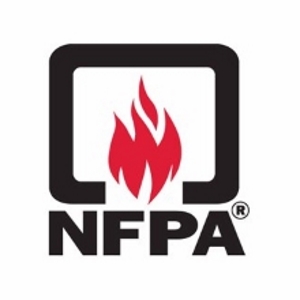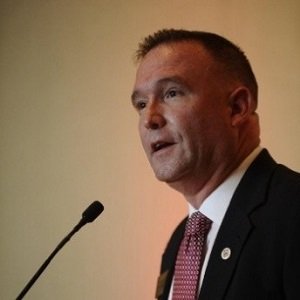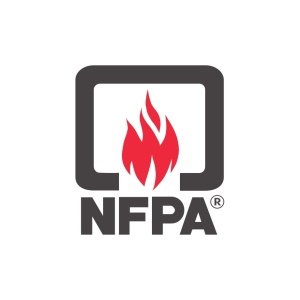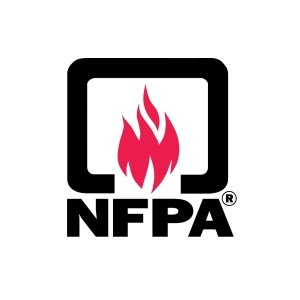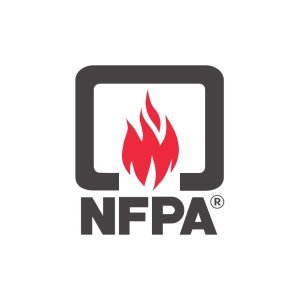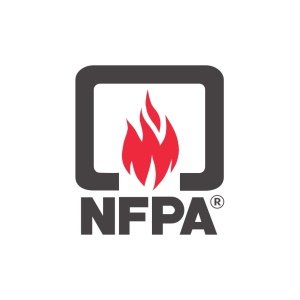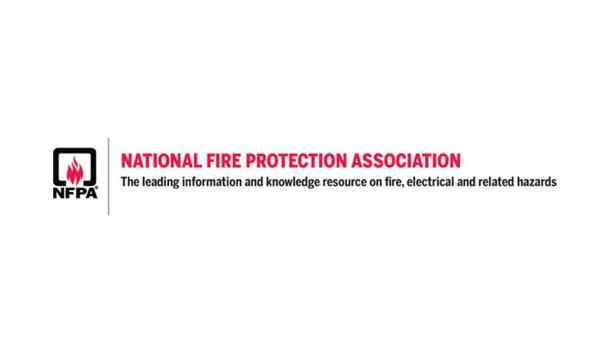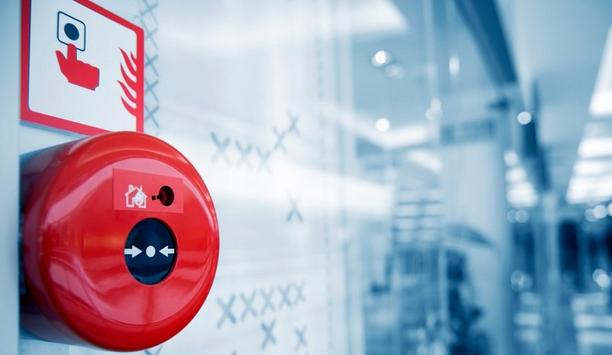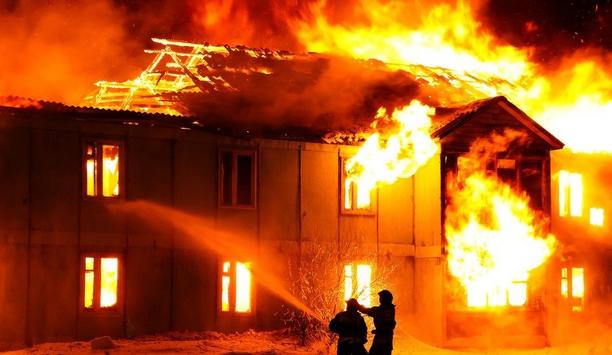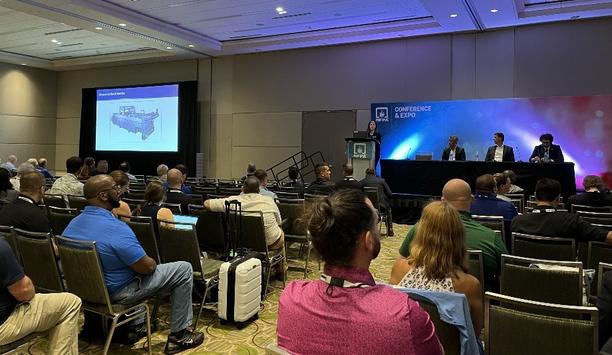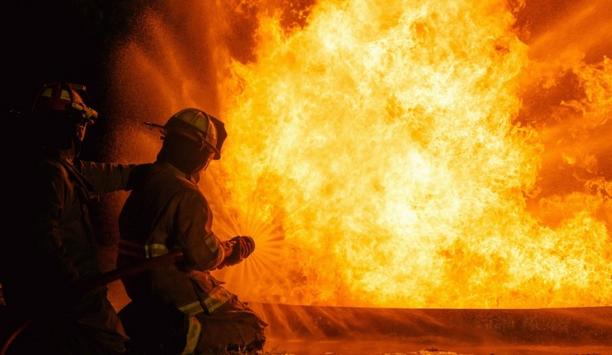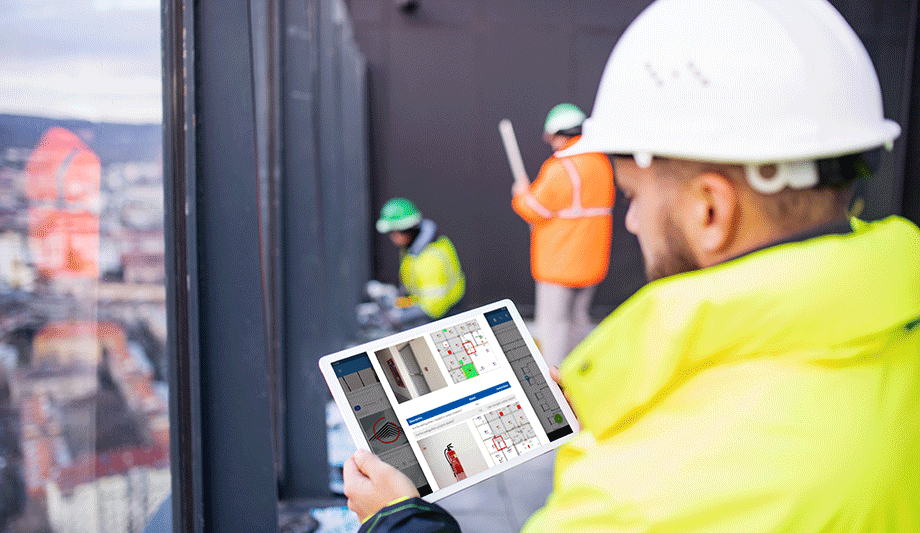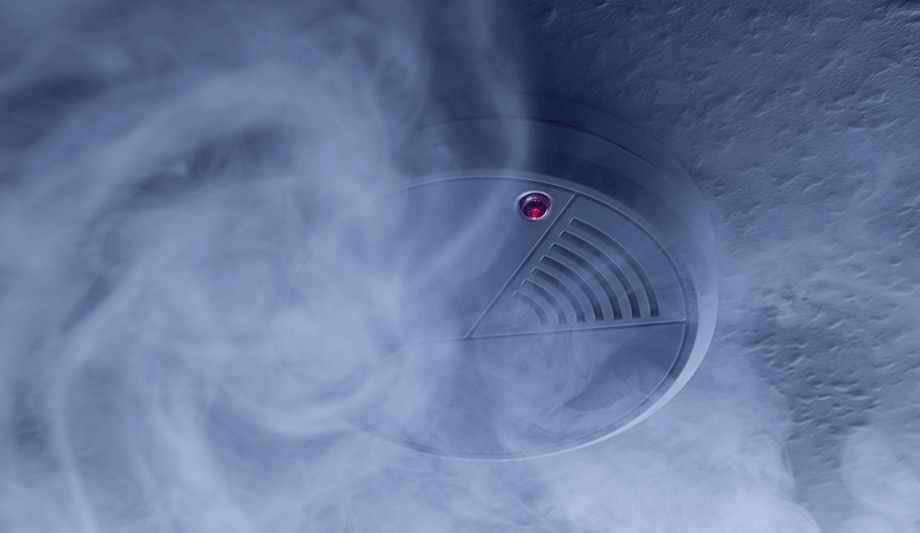National Fire Protection Association (NFPA) - Experts & Thought Leaders
Latest National Fire Protection Association (NFPA) news & announcements
Johnson Controls, the pioneer for smart, healthy, and sustainable buildings, launches the new Simplex 4017ES Fire Alarm Control Unit to help customers meet evolving life safety voice regulations. Available in addressable and conventional versions, the 4017ES is a compact, cost-effective control unit that offers three communication options – fire, alarm, and non-alarm – for added clarity during emergency situations and public addresses in small to mid-size buildings. NFPA and IBC fire alarm codes “We developed the 4017ES system for customers who require an affordable, compact, all-in-one voice fire alarm option for schools, offices, hotels, restaurants, and retail,” said Martin Schulte-Frankenfeld, senior director of product management, Fire Detection at Johnson Controls. “As NFPA and IBC fire alarm codes evolve to require smaller buildings like schools to use non-alarm spoken messages along with traditional audio and visual fire alarms, facility teams are in need of a right-sized solution that meets these codes as well as their budgets.” Fire and alarm notification systems Non-alarm audio communication technology, like PA systems, is installed Historically, non-alarm audio communication technology like public address (PA) systems are installed separate from fire and alarm notification systems in smaller buildings. This requires time, labor and materials to connect two separate systems. With alarm and non-alarm communication in one integrated solution, landlords, business owners and property managers can now easily and more efficiently send targeted messaging to individual zones or specific devices within a building, maximizing clarity and improving response times. Simplex 4017ES Fire Alarm Control Unit features Additionally, the system supports specific addressable speakers and speaker-strobes as well as multi-tone appliances to deliver low-frequency 520 Hz alarms. The Simplex 4017ES Fire Alarm Control Unit features a breadth of audio options that cover the diverse needs of buildings with 50 or more occupants. These audio options include: Emergency and security alerts Operational notification and testing Non-emergency announcements Public service announcements Background music Simplex addressable control units Control unit comes preassembled and leverages the high-quality design that clients expect from Simplex The compact package of the 4017ES blends in well with physical environments, allows for flexible installation options, and saves valuable wall space. The control unit comes preassembled and leverages the high-quality design that customers expect from the Simplex brand. Like all Simplex addressable control units, the 4017ES includes the revolutionary self-testing feature that automatically verifies the operation of every appliance and speaker in seconds, reducing system disruption. Building and life safety codes The 4017ES Fire Alarm Control Unit supports up to 250 points to meet the needs of current and evolving infrastructure. The system is UL Listed and compliant with various building and life safety codes, including NFPA 72, Group E Occupancy, and IBC Sections 402, 403, and 907.
Fire emergencies can truly strike without warning, making proper emergency exit planning important for any workplace. No doubt fires are completely unpredictable and preparedness can make the difference between life and death, besides preventing major damage to property and business operations. In manufacturing plants where heavy machinery, flammable materials and electrical hazards are present, a well thought out fire safety strategy is really important. In this guide, people can learn everything about emergency exit planning importance. Why is emergency exit planning so important? Without an emergency exit plan, there can be severe consequences like loss of life Firstly, people need to know that fire safety goes way beyond just a legal requirement. It’s a moral and a practical necessity. Without an emergency exit plan, there can be severe consequences like loss of life. Fire spreads rapidly and without clear exit strategies, employees can become trapped. Smoke inhalation burns and panic-related accidents can happen. Furthermore, fire can also destroy machinery inventory and infrastructure, leading to costly repairs. A fire incident can halt production causing revenue loss and computational damage. The National Fire Protection Association (NFPA) reports that manufacturing industries account for at least 11% of all workplace fires. Some of the main elements of an effective emergency exit plan: Every building must have multiple exits strategically planned to allow quick evacuation. Exit signs must be illuminated and visible even in low light conditions. Pathways to exits must remain clear of obstructions or other things to prevent delays during emergencies. Smoke detectors and fire alarms could be strategically installed throughout the facility. Regular maintenance and testing ensured that they function well. Alarm systems should connect to emergency services for swift response. Sprinklers and fire extinguishers must be installed at key locations in your property. Employees should be well trained in using fire extinguishers to control small fires. In case of high risk areas, automated suppression systems like gas or foam based fire suppression might be required. Conduct regular fire drills to ensure there are employees who know how to escape the routes. Property owners and managers should train the employees on how to handle different types of fire hazards. They should assign fire wardens responsible for guiding evacuations. It’s very important to store flammable substances in designated well ventilated areas and use fire resistant containers to minimize risks. Maintain material safety data sheets to inform the workers about hazardous materials. Use fire resistant walls and of course insulation to contain potential fires. Just install fireproof barriers between the high risk areas and ensure electrical wiring is up to the code to prevent electrical fires. Always work with local fire departments to conduct inspections and get expert advice. Always establish a right emergency communication plan with the first responder. Common fire safety mistakes to avoid Employees must be familiar with exit strategies to prevent confusion in real emergencies Even with fire safety measures in place, common mistakes can truly compromise emergency preparedness. Never store materials or equipment in front of exit doors. Employees must be familiar with exit strategies to prevent confusion in real emergencies. Furthermore, a broken alarm system can delay response and worsen fire damage, so there should be no faulty fire alarm. If workers don’t know how to react, the risk of injury increases, so insufficient training can also be risky. The fire extinguishers and sprinklers need inspections to remain functional, so property managers should not avoid maintenance or fire equipment. How to improve a workplace fire safety plan? There is a need to update emergency exit plans and train the employees frequently. Always use fireproof doors, coatings and insulations to prevent fire spread. Place the fire extinguishers within easy reach and train the workers on proper usage. In case of power failure, emergency lights guide employees to exits. Regular audits by professionals can help identify weakness in a fire safety plan. So above all, it is important to know that manufacturing plants and workplaces need to proactively prepare for fire emergencies by implementing comprehensive fire safety solutions. By following the best practices for emergency exit planning, property managers can reduce the fire risk, protect the employees and assets, and also reduce the downtime after an emergency. If the fire safety plan is not updated, now is the time for it. It is important to always have a right plan in place to reduce emergency chances.
The National Fire Protection Association® (NFPA®) released its third annual Industry Trends Survey, which reveals skilled worker sentiments around the current state of labor, training, and technology on the jobsite. The survey provides a look at what the skilled trades industry can expect in each of these areas in 2025. Major Challenges in 2025 Exactly half of skilled tradespeople identified a shortage of qualified candidates as the top challenge for workers this year. This is a 3 percent decrease from the year prior, indicating that, despite the continued need to increase staffing in the industry, some workers are starting to feel relief from this challenge. Skilled labor shortage concerns primarily stem from worker retirement and workforce retention challenges, with 31 percent of workers citing each of these as major challenges when it comes to workforce staffing. Skilled labor shortage in 2025 As a result, the skilled labor shortage will continue to impact organizations’ budgets in 2025 As a result, the skilled labor shortage will continue to impact organizations’ budgets in 2025. For example, 37 percent of respondents anticipate their organization’s budget will be focused on increased hiring to add or replace jobs, down 3 percent from last year. Training will also become a heightened focus for organizations, with 18 percent of respondents planning to budget for increased training for employees. “Addressing the skilled labor shortage is not just a challenge, but an opportunity to invest in the future of our workforce,” said Jim Pauley, NFPA President and CEO. “In 2025, we can expect to see more organizations focused on talent development, embracing innovation, and supporting education and training initiatives to help bridge the gap and ensure sustainable growth for the industry.” Technology adoption vital for efficiency and communication Looking towards 2025, almost half (46 percent) of respondents plan to adopt more digital tools within their day-to-day operations, an uptick of 9 percent from 2024. Currently, 38 percent of respondents feel a lack of job-enabling technology is one of their top challenges at work, followed by a lack of knowledge sharing and collaboration on the jobsite (31 percent), indicating that increased technology adoption will better support workers already stretched thin from labor shortages. Despite an increase in willingness to use these technologies, there remain barriers to adoption and concerns around how to properly implement technological innovations: 44 percent of respondents cited the cost of implementation as the primary obstacle to adopting new technologies, followed by lack of training or knowledge (25 percent). 20 percent of skilled trade professionals believe there will be pushback within the industry to adopt new technologies, while only around 10 percent of respondents cited a lack of availability/access as a primary barrier. Training and certification programs are a top priority for 2025 Fifty-two percent of industry experts plan to make this same gain in certificates Training, both in new technologies and in specialized skills and knowledge, is top of mind for skilled workers in 2025. Industry professionals are doubling down on training and certifications, with over half (54 percent) of respondents planning to participate in more training sessions than in 2024. Fifty-two percent of industry professionals plan to make this same increase in certifications, a 10 percent increase from last year. When asked about the career and professional development benefits from participating in professional organizations or trade association memberships, respondents noted the following: 51 percent cited networking opportunities with industry professionals and training programs, respectively, as the most valuable aspects of their membership. 47 percent cited access to industry resources and publications. 22 percent cited advocacy for industry-related issues and regulations. Fire, electrical, and life safety industries “To stay competitive in the fire, electrical, and life safety industries, organizations must not only embrace technology but invest deeply in training and certifying their workers,” continued Pauley. “The increased interest from skilled workers in networking through professional organizations is encouraging and shows the value our workforce places on investing in their professional growth.” Methodology NFPA collected responses from 358 U.S.-based workers, 18 years and older, in the electrical, manufacturing, construction, engineering, architect/design, facility maintenance, fire service, and insurance/risk management fields via a third-party provider to determine the findings of its 2025 Industry Trends Survey. The survey was conducted between November 5, 2024– November 12, 2024.
Insights & Opinions from thought leaders at National Fire Protection Association (NFPA)
The National Fire Protection Association (NFPA) has developed over 300 codes and standards to support the rapidly changing needs of the fire and life safety industry. NFPA 72, National Fire Alarm and Signaling Code®, is perhaps one of the most wide-ranging, designed to “meet society's changing fire detection, signaling, and emergency communications demands.” Development of building solutions Updated every three years, the 2025 edition of NFPA 72 took effect on September 18, 2024 Updated every three years, the 2025 edition of NFPA 72 took effect on September 18, 2024, and contains several key updates around technology, cybersecurity, and integration to support the continued development of connected building solutions. Staying ahead of these updates will ensure your building not only meets current needs but is able to adapt for future challenges. Cybersecurity and Remote Access While the 2022 edition of NFPA 72 introduced a variety of cybersecurity updates, it did not specify how they should be achieved. In the 2025 edition, Chapter 11 addresses this and outlines requirements to protect fire alarm and signaling systems from cyber-attacks across configuration, implementation, security, and access. This is particularly of interest when it comes to continued use of remote access processes across building systems, which allow a variety of maintenance to be done partially offsite, such as programming and resetting support. This includes the installation of patch updates, for example, much like those we have on our phones and laptops. Cybersecurity guidelines Reliability is of the utmost importance, meaning a technician needs to be on-site With life safety systems, however, you can’t simply push a button to start an update and move on. Reliability is of the utmost importance, meaning a technician needs to be on-site, while another installs patch updates remotely to ensure continuity of service and troubleshoot if needed. In an increasingly hybrid world, clear cybersecurity guidelines for remote access allow service providers to take advantage of such capabilities without fear of infiltration by threat actors. Advanced Technology Enhancements The incorporation of acoustic leak detection, thermal imaging, and a new notification mode in the 2025 edition of NFPA 72 offer both new applications for existing life safety technologies and advantages for increased accessibility. While acoustic leak detection is not a new technology, its use in the fire industry is a relatively recent application. These detectors identify the sound produced by a pressurized gas release or water leak in a pipe or its threads. In some cases, they can pinpoint the exact location of the leak. Integration with fire alarm systems Introduction of acoustic leak detection in NFPA 72 provides fire professionals with an understanding The introduction of acoustic leak detection in NFPA 72 provides fire professionals with an understanding of how to install, maintain, and test detectors, supporting integration with fire alarm systems for a more integrated life safety system across facilities. Thermal imaging, in a similar manner, can detect quickly developing fire threats by identifying changes in heat range. While traditional fire detection methods remain essential, thermal imaging enhances early threat detection and can identify risks, such as the self-combustion of lithium-ion batteries, which can occur in a matter of seconds, even before conventional sensors would trigger an alarm. New notification operation mode NFPA 72 also introduces a new notification operation mode, Restricted Audible Mode Operation (RAMO), which “recognizes the need for notification options in areas where loud sounds might be detrimental to typical occupants of the notification zones.” This can include spaces such as schools or healthcare facilities occupied by people with autism spectrum disorder, neurodiverse individuals, or others sensitive to stimuli like sound and light. With the approval of the authority having jurisdiction, facility managers can reduce the level of audio from fire alarm systems to better accommodate occupants, increase facility accessibility and experiences. Streamlined System Integration Architects and engineers can now plan for expansive areas without the constraints of challenges A significant update in the 2025 edition clarifies the allowance of smoke detectors on ceilings up to 40 feet high, impacting school design, hotel lobbies and other large spaces. While a seemingly minor change, this modification enhances design flexibility and fire alarm system effectiveness. Architects and engineers can now plan for expansive areas without the constraints of computer modeling or challenges posed by structural elements like beams or ventilation systems, ultimately improving safety and efficiency. Guidelines for auxiliary service providers The addition of guidelines for auxiliary service providers (ASPs) and communications technologies is another noteworthy integration update, ensuring that fire protection signals are processed effectively and aligning safety systems with evolving technology trends. Historically, fire alarm systems have not been able to directly contact fire departments to minimize the prevalence of false alarms; instead, supervising stations have served as the middle party to vet fire alarm activations from ASPs. In the last 10-15 years, this process has become largely electronic (via text or email) as opposed to picking up the phone, and continued technological advancements have created several new methods for service providers to send fire alarm system signals to supervising stations. Introduction of guidelines for ASPs Intro of policies for ASPs has given jurisdictions the flexibility to execute new technologies This shift is largely due to a trickle-down effect from the residential technology market, where smart technology and IoT devices have become the norm, influencing technological development in the commercial realm. While some municipalities may want to take advantage of new technologies to streamline the fire response process where possible, many fire departments are still relying on older technologies and may not have the resources available to implement major tech upgrades. The introduction of guidelines for ASPs has provided jurisdictions with the flexibility to implement new, progressive technologies where viable, while protecting the ability of others to maintain their current processes for fire alarm notifications and action by emergency response agencies. Looking Ahead As fire and life safety professionals navigate rapid technological developments, staying current with the latest NFPA codes and standards remains essential to ensuring safety and maintaining seamless service across the built environment. The 2025 edition of NFPA 72 introduces important updates that reflect the evolving capabilities of modern fire alarm and signaling systems. With these advancements, facility managers have a responsibility to familiarize themselves with the new requirements to ensure their systems are not only code-compliant, but also more secure, scalable and seamlessly connected to other building technologies. While the 2025 edition has only been in effect for a short time, the next revision cycle for 2028 is already on the horizon, making now the ideal moment for industry pioneers to evaluate the standard’s implementation and identify areas for continued improvement.
It is no secret that electricity can have a significant impact on the fire industry, and this is not just something that is restricted to a single country. Daily, we see the devastation that improper electrical wiring and defective products can have on a global scale. Personal injury, property loss, and death can all wreak havoc on those working within the fire service and other first responders, not to mention the significant impact on the entire community where the events take place. steps to minimize electrical incidents There are steps that can be taken to minimize the number of these horrific electrical incidents Research from NFPA® that highlights home electrical fire statistics shows that U.S. fire departments responded to an estimated average of 46,700 home fires involving electrical failure or malfunction each year between 2015 and 2019. An additional 16,390 non-residential electrical fires required a response and were tracked between the years 2012 and 2016, indicating just how burdensome electrical fires are on the fire service. However, there are steps that can be taken to minimize the number of these horrific electrical incidents. The implementation and utilization of current electrical codes and standards is a foundational piece in beginning to minimize these issues from arising. Triad of codes and standards NFPA has a triad of codes and standards that focus on mitigating risk and injury associated with electricity that have become known as the Electrical Cycle of Safety™ (ECoS™). When used collectively and properly, NFPA 70®, National Electrical Code® (NEC®), NFPA 70B, Standard for Electrical Equipment Maintenance, and NFPA 70E®, Standard for Electrical Safety in the Workplace®, provide an alliance for achieving holistic electrical safety. By utilizing the documents that make up the ECoS, businesses and communities can help to mitigate electrical fires and injuries that put significant strain on the limited resources available to the fire service. NFPA has a triad of codes and standards that focus on mitigating risk and injury Electrical Cycle of Safety The Electrical Cycle of Safety starts with an installation that is grounded in the requirements of the NEC The Electrical Cycle of Safety starts with a proper electrical installation that is grounded in the requirements of the NEC. This could be the initial installation for a brand-new building, an addition to an existing building, or new equipment being installed within a building. Regardless of what type of installation is taking place, it is important that, where applicable, proper electrical permits have been filed by the licensed contractor performing the work in the municipality where the building is established. This should then include having the appropriate inspections performed by a qualified electrical inspector throughout each stage of the installation. Having all electrical work done and inspected in accordance with the applicable NEC requirements is the appropriate first step in assuring electrical safety that protects both people and property. Electrical equipment and systems After any installation has been done, electrical equipment and systems must be maintained to ensure that they remain safe for those that service the equipment, as well as those that may be utilizing the equipment, such as production line workers or, in some cases, even the general public. An example of this might be keeping an electric vehicle charger in proper, safe working order so that citizens who need to use it are not exposed to any electrical safety risks, like shock hazards. NFPA 70B provides electrical equipment maintenance requirements and should be used in conjunction with any specific manufacturer maintenance requirements for electrical equipment. Safe working practices Maintaining equipment not only helps ensure electrical safety but it also helps to preserve its reliability Maintaining equipment not only helps ensure electrical safety, but it also helps to preserve its functionality and reliability. In the case of electric vehicle chargers, utilizing Chapter 33 of NFPA 70B can help to establish a maintenance plan for community-based public chargers that will keep them safe and functional for users, while minimizing the need for first responder actions. NFPA 70E is about establishing safe working practices to protect those who engage with electrical systems and equipment while on the job through either installing or servicing them or utilizing the equipment in performing their assigned work tasks. As is well established, there are many risks associated with electricity, such as electrical shock and arc flash incidents, that can put individuals at a significant risk of injury. Safe and healthy working conditions Not only is there a moral obligation as an employer to keep employees safe on the job, but there is often a legal one as well. For example, in the U.S., the Occupational Safety and Health Administration (OSHA) was established with a mission to assure safe and healthy working conditions for working men and women by setting and enforcing standards and by providing training, outreach, education, and assistance. OSHA and NFPA 70E work in harmony to help ensure that employers are providing safe places of employment for their workers. OSHA establishes and enforces its own requirements around how employers must establish electrical safety in their place of business and, in most cases, NFPA 70E provides the means on how to accomplish those requirements. fire service and other first responders First and foremost, it means that the community as a whole becomes safer Together, the ECoS establishes a way in which electrical safety can be provided to communities that minimizes the number of responses that are required of the fire service and other first responders. First and foremost, it means that the community as a whole becomes safer. Furthermore, in a day and age where resources continually become more and more limited, alleviating the need to respond to a higher number of incidents also helps ensure that those valuable resources can be utilized where they are most needed. Knowledge to raise awareness of the ECoS So, how can the ECoS be utilized to help support the fire service and other first responders? As with many things, it begins with gathering knowledge to raise awareness of the ECoS and establish a starting point. Moving forward, this knowledge can be shared with others who have an impact on electrical safety across industries within communities. Understanding the equal importance of safe electrical installations, maintenance, and worker safety in electrical applications will make it easier to have a dialogue with the specific groups or individuals that can impact those areas. Just as the ECoS works in unison to achieve overall electrical safety, it takes everyone working together collectively to do the same.
Thousands of industry professionals gathered at the 2024 NFPA Conference and Expo in Orlando in June. The event brought together educational sessions, networking opportunities, and an exhibitor showcase. NFPA is the National Fire Protection Association. The NFPA annual meeting allowed members and the public to discuss and vote on proposed changes to fire codes and standards. “It’s a gathering place for people in the industry,” says Dr. Rodger Reiswig, Vice President of Industry Relations at Johnson Controls. “You can walk around the floor and observe the trends, see what people are talking about, and view industry trends through a clear set of eyes.” New Foundation Series As vice president of industry relations, Reiswig acts as Johnson Controls’ liaison with the NFPA, works with NFPA technology committees, and serves on the Standards Council that oversees more than 300 NFPA codes and standards documents. Foundation Series is a complete family of fire alarm control units and peripheral devices At the NFPA Conference and Expo in Orlando, Johnson Controls provided “spotlight” seminars at their exhibit booth and highlighted products and services including interactive tools, inspections, remote services, restaurant systems, and the new Foundation Series Fire Safety Solution for the protection of small to mid-size buildings. The Foundation Series is a complete family of fire alarm control units and peripheral devices. NFPA’s codes and standards In addition, Reiswig attended seminars and Standards Council sessions. Technical sessions covered codes and standards that are currently “in cycle” (i.e., in the process of being updated). In a technical session on the last day of NFPA, anyone could attend to suggest changes and garner support from others on various changes. Consensus is a core principle of NFPA’s codes and standards. “This is a chance for everyone to participate, whether your interest is in roofing materials, how buildings are built, or life safety systems,” Reiswig adds. “Codes tell us when to do something, but standards tell us how to do it. If the occupancy standard says put in a fire alarm, the NFPA standard tells you how to do that.” Anyone at any level in any role or discipline can participate. new NFPA 915 Standard Fire alarm and life safety have yet lagged industry sectors when it comes to remote connectivity “Technology is changing rapidly, and the type of construction is different than 20 or 30 years ago. Use of new tools and materials in buildings is changing how much time I have to escape smoke or fire,” Reiswig says. “New construction materials allow fires to happen quickly, spread faster, and give off toxic chemicals. Tighter buildings ensure energy efficiency, but they allow less ventilation, so carbon monoxide can accumulate faster.” A common theme at the show was remote connectivity, highlighting the new NFPA 915 Standard for Remote Inspections, which guides new technologies to enable remote access and testing of life safety systems. Fire alarm and life safety have previously lagged other industry sectors when it comes to remote connectivity, but the new NFPA 915 standard opens new possibilities, and vendors at the show were promoting remote capabilities and inspections. develop safeguards and capabilities NFPA 915 Standard sets need for performing remote inspections safely and effectively The NFPA 915 Standard establishes requirements for performing remote inspections safely and effectively. It addresses various types of remote inspections. The standard also defines the responsibilities of various parties involved in a remote inspection, such as the inspector, property owner, and authority having jurisdiction (AHJ). The standard covers data collection procedures, data security, and data ownership. Overall, the standard helps to ensure that remote inspections can be conducted in a way that meets safety requirements. In effect, NFPA 915 gives the green light to manufacturers and Underwriters Laboratories (UL) to develop safeguards and capabilities to log into life safety systems remotely. The approach can help to simplify inspections, which can be performed remotely or with only one technician required on-site rather than two. Requirements include how systems communicate, the cybersecurity and credentials required, and the prevention of outside connections. Beyond fire alarms, the standard also allows other remote inspections, such as using a drone in a large warehouse to inspect sprinkler heads. Real-time information and instructions Inspectors are not allowed into buildings such as nursing homes and clinics to check their safety systems NFPA 915 was being considered before the COVID pandemic, but the business shutdowns and social distancing requirements during the worst of the pandemic increased awareness of the needs and benefits of remote inspections. During COVID, inspectors were not allowed into buildings such as nursing homes and hospitals to inspect their life safety systems. Remote access and inspections became critical, thus raising awareness of the feasibility of remote inspections that continue to drive their adoption. Another area of interest in NFPA was mass notification systems, which have matured a lot since they were introduced into the NFPA code in 2007. It’s easier than ever to provide real-time information and instructions to people in an area. Connectivity among fire alarm systems inside buildings, digital signage, and other life safety systems are promoting better notification. Area of refuge systems A new area of discussion and product development is “area of refuge” systems that complement Americans with Disabilities (ADA) requirements in buildings. In a high-rise building, for example, if the elevators are disabled, it may be impossible for a person using a wheelchair to evacuate. Instead, there are designated “areas of refuge,” which are rated to provide two hours of protection from fire. New notification systems can communicate with first responders about occupants in these areas. The NFPA conference increasingly incorporates a global presence, encouraging more collaboration among entities, countries, and associations about needs around the world. Manufacturers can work together through various associations including the Automatic Fire Alarm Association, Euralarm in Europe, and others. “Life safety is worldwide, and fires may be the same or different in various areas,” says Reiswig. “We need to remember that standards are not just for the United States because people are active from other countries.”
The New Future For Fire Agencies
DownloadThe Eight Key Trends in Fire Detection in 2023
DownloadA Digital Platform to Improve Fire Safety Compliance and Inspections
DownloadOvercoming the Challenges of Fire Safety in the Paper Industry
DownloadCarbon Monoxide: Creeping Killer Caught In The Act
Download




